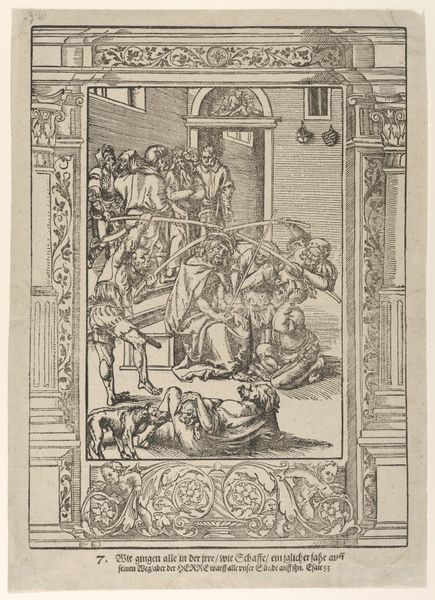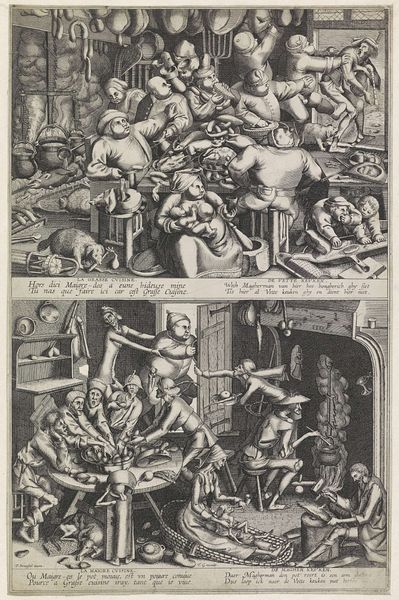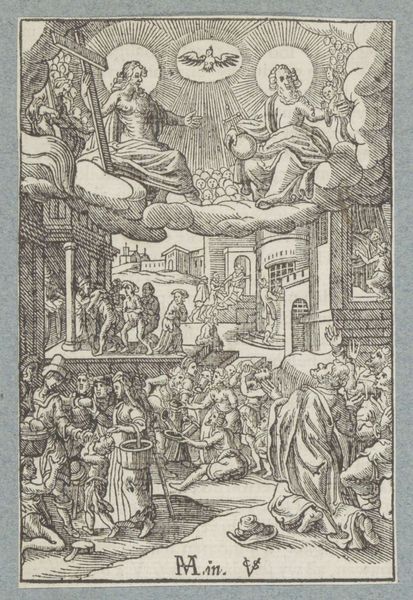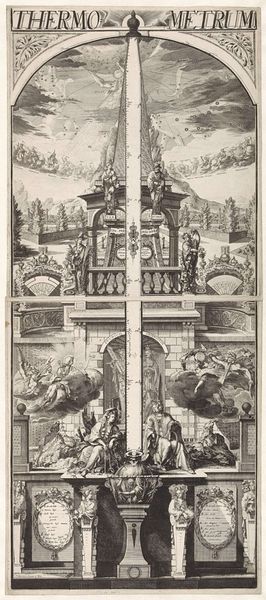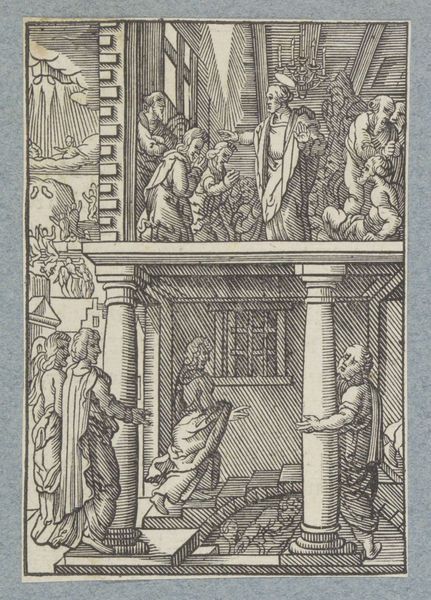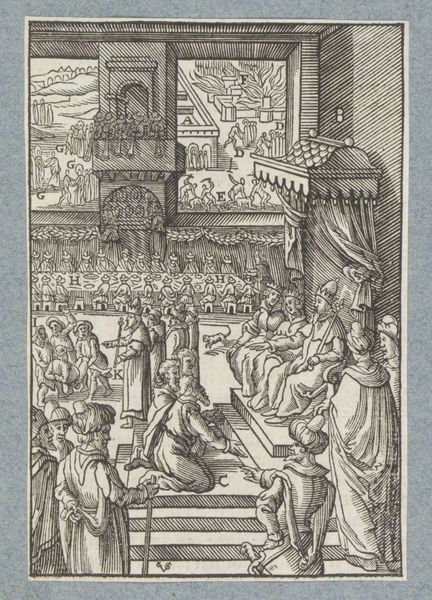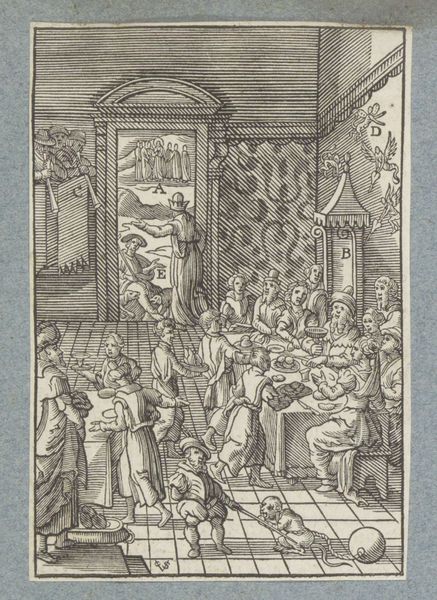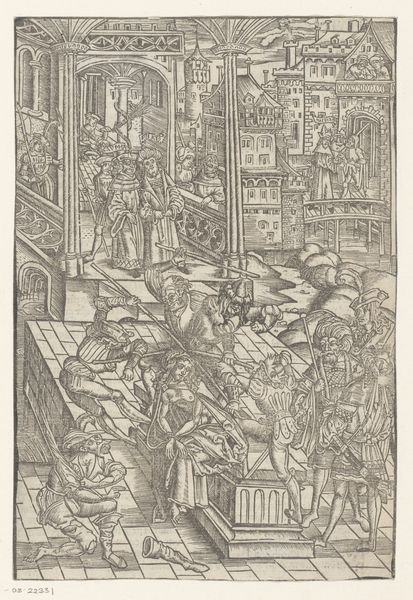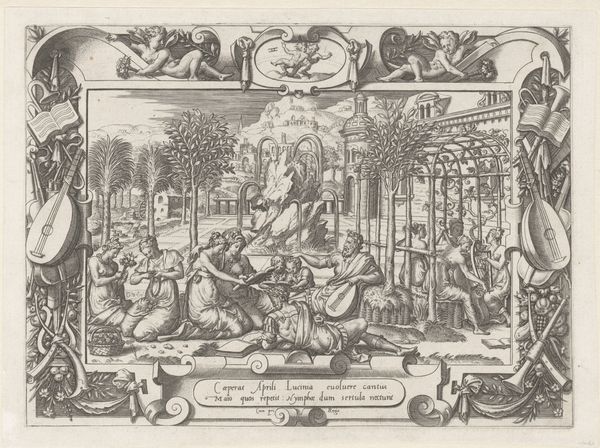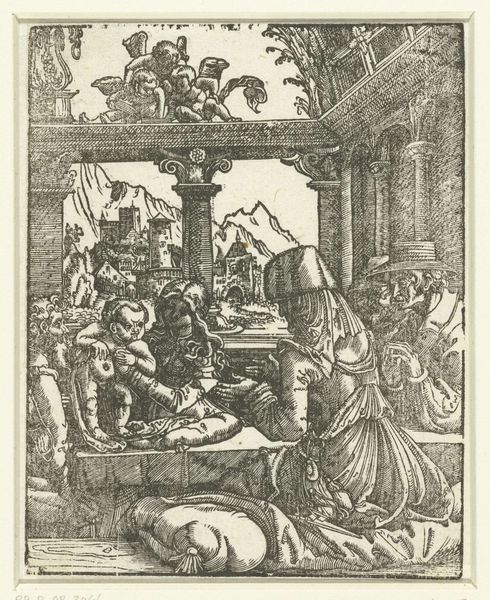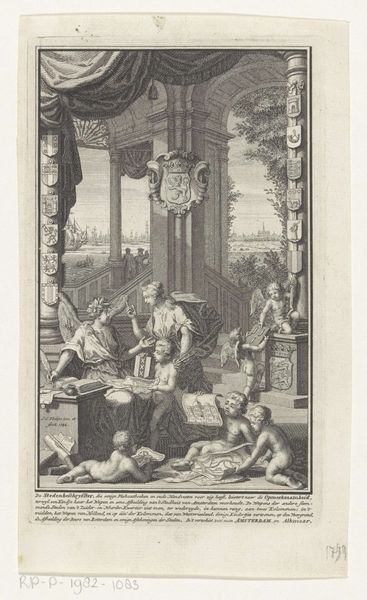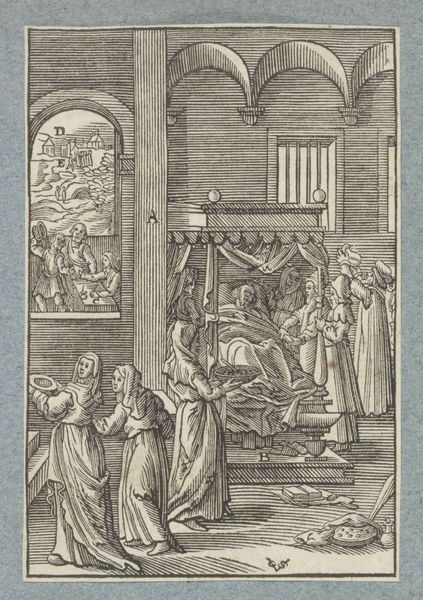
print, engraving
#
baroque
# print
#
line
#
cityscape
#
genre-painting
#
history-painting
#
engraving
Dimensions: height 415 mm, width 293 mm, height 380 mm, width 272 mm
Copyright: Rijks Museum: Open Domain
Curator: This intricate engraving, entitled "Festa della Sensa (achtste gedeelte)," comes to us from Jost Amman, dating back to 1679. It’s a glimpse into a specific Venetian celebration. What’s your initial take? Editor: Well, it’s quite detailed. The ship itself dominates the view, layered with people, and I find the repetition of forms creates a rigid sense of order, contrasting with the churning water. The social hierarchy on display here is striking. Curator: Exactly. Amman’s print captures the Doge's annual "Festa della Sensa," or Ascension Day Feast. Historically, this marked Venice's symbolic marriage to the sea, solidifying its maritime power. Notice how the elite are elevated above the enslaved rowers? Editor: I do, it speaks volumes. It brings to mind post-colonial critiques where power dynamics are visually constructed and reinforced through art. The pomp and circumstance on the upper deck—and let's not ignore those phallic banners— serves as a stark counterpoint to the labour powering it all. Curator: A keen observation. Considering the era, it’s interesting to contemplate how this visual narrative might have impacted perceptions of Venetian dominance. Was this primarily internal propaganda, or intended for a wider, potentially more critical, audience? Editor: I’d wager it was largely internal. While promoting Venetian might abroad, it would also be consumed by those lower in the societal hierarchy, solidifying their perception of a ruling elite that supposedly acts in their favor. These images perpetuate power structures, convincing populations to uphold a sometimes harmful status quo. Curator: Certainly. Amman's technique of detailed engraving, while serving its historical purpose of documenting and disseminating, unknowingly provides us today with rich insight into these societal complexities and hierarchies. Editor: Absolutely. I think it speaks to how art always exists as a mirror and a window, a mirror reflecting existing societal power structures, but also a window into interpreting their potential manipulation. It challenges us to not only witness history but question it. Curator: It's been eye-opening, and has only scratched the surface. Editor: Indeed. Thanks.
Comments
No comments
Be the first to comment and join the conversation on the ultimate creative platform.
